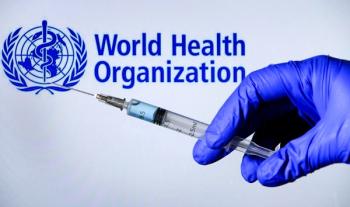
Derm Match Game: Two Leg Lesions
Dr Rosen invites you to match the clinical characteristics in the checklist with the disorders pictured in the photos. This month’s challenge: 2 leg lesions.
Case 1
Case 2
Match the following characteristics with the clinical disorders pictured in the photographs of Cases 1 and 2. Then read the brief descriptions that follow on the next page to see how well you did.
Case 1
DISCUSSION
Both of the photographs are from the same patient; the images depict the presenting pathology on each leg. In fact, the patient shown as
CTCL comprises a heterogeneous group of lymphoproliferative disorders characterized by clonal replication of T-lymphocyte subsets and by disease-defining and differentiating clinical and molecular features.2,3 Mycosis fungoides is the most common form of CTCL, accounting for 44% to 50% of all cutaneous lymphomas.3 At least 1000 new cases are diagnosed in the United States each year; the mean age at onset is in the mid-sixth decade of life.4
Case 1/2 is a previously healthy 60-year-old man whose skin lesions first developed about 5 to 6 months before presentation and have been increasing in size and thickness since that time. A biopsy from each morphology revealed features consistent with CTCL: a dermal band-like infiltrate of atypical lymphocytes with permeation into the epidermis (
This case beautifully illustrates the frequently sequential clinical nature of mycosis fungoides. The disorder often begins as flat, scaly patches; evolves into elevated, thick plaques; and ultimately may develop into exophytic tumor masses. This case also demonstrates why correct diagnosis may be delayed, especially early in the disease. Patch- and plaque-stage mycosis fungoides may clinically mimic tinea corporis, eczema, psoriasis, subacute lupus erythematosus, and other nonmalignant entities. Similarly, initial histological examination results may be nonspecific, and serial biopsies may be required to firmly establish a diagnosis.5
Both prognosis and therapy depend heavily on clinical staging. In turn, staging relies on both the morphological features and extent of cutaneous disease; the presence or absence of disease within lymph nodes; the presence or absence of visceral involvement; and the presence or absence of circulating atypical lymphocytes within the bloodstream. A detailed explanation of staging is available elsewhere.6
Case 2
Early-stage disease (eg, as shown in
Mycosis fungoides is typically radiosensitive; therefore, very thick or ulcerated plaques and tumor masses (such as that depicted in
Many cases of mycosis fungoides run an indolent course, including a good response to almost any intervention. In contrast, other cases run a course characterized by rapid clinical deterioration and early development of cutaneous tumors and lymphatic and visceral involvement. A multidisciplinary approach, involving practitioners from dermatology, hematology, oncology, and radiation therapy, is ideal for all cases of mycosis fungoides.5 Patients who have complex cases might also be considered for referral to a regional interdisciplinary cancer center.
References:
REFERENCES:
1.
Girardi M, Heald PW, Wilson LD. The pathogenesis of mycosis fungoides.
N Engl J Med
. 2004;350:1978-1988.
2.
Willemze R, Jaffe ES, Burg G, et al. WHO-EORTC classification for cutaneous lymphomas.
Blood
. 2005;105:3768-3785.
3.
Burg G, Kempf W, Cozzio A, et al. WHO/EORTC classification of cutaneous lymphomas 2005: histological and molecular aspects.
J Cutan Pathol
. 2005;32: 647-674.
4.
Koh HK, Charif M, Weinstock MA. Epidemiology and clinical manifestations of cutaneous T-cell lymphoma.
Hematol Oncol Clin North Am
. 1995;9:943-960.
5.
Keehn CA, Belongie IP, Shistik G, et al. The diagnosis, staging, and treatment options for mycosis fungoides.
Cancer Control
. 2007;14:102-111.
6.
Demierre MF, Kim YH, Zackheim HS. Prognosis, clinical outcomes and quality of life issues in cutaneous T-cell lymphoma.
Hematol Oncol Clin North Am
. 2003;17:1485-1507.
7.
Hoppe RT. Mycosis fungoides: radiation therapy.
Dermatol Ther
. 2003;16: 347-354.
8.
Lansigan F, Choi J, Foss FM. Cutaneous T-cell lymphoma.
Hematol Oncol Clin North Am
. 2008;22:979-996, x.
Newsletter
Enhance your clinical practice with the Patient Care newsletter, offering the latest evidence-based guidelines, diagnostic insights, and treatment strategies for primary care physicians.



















































































































































































































































































